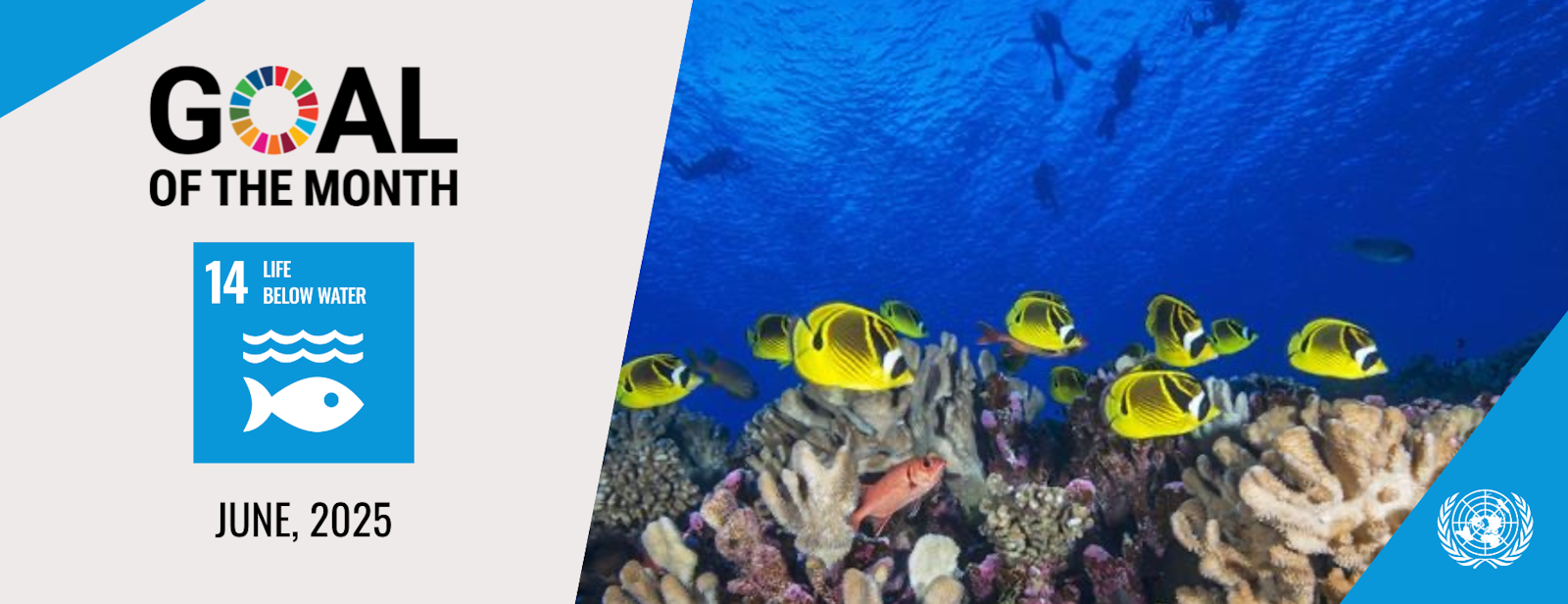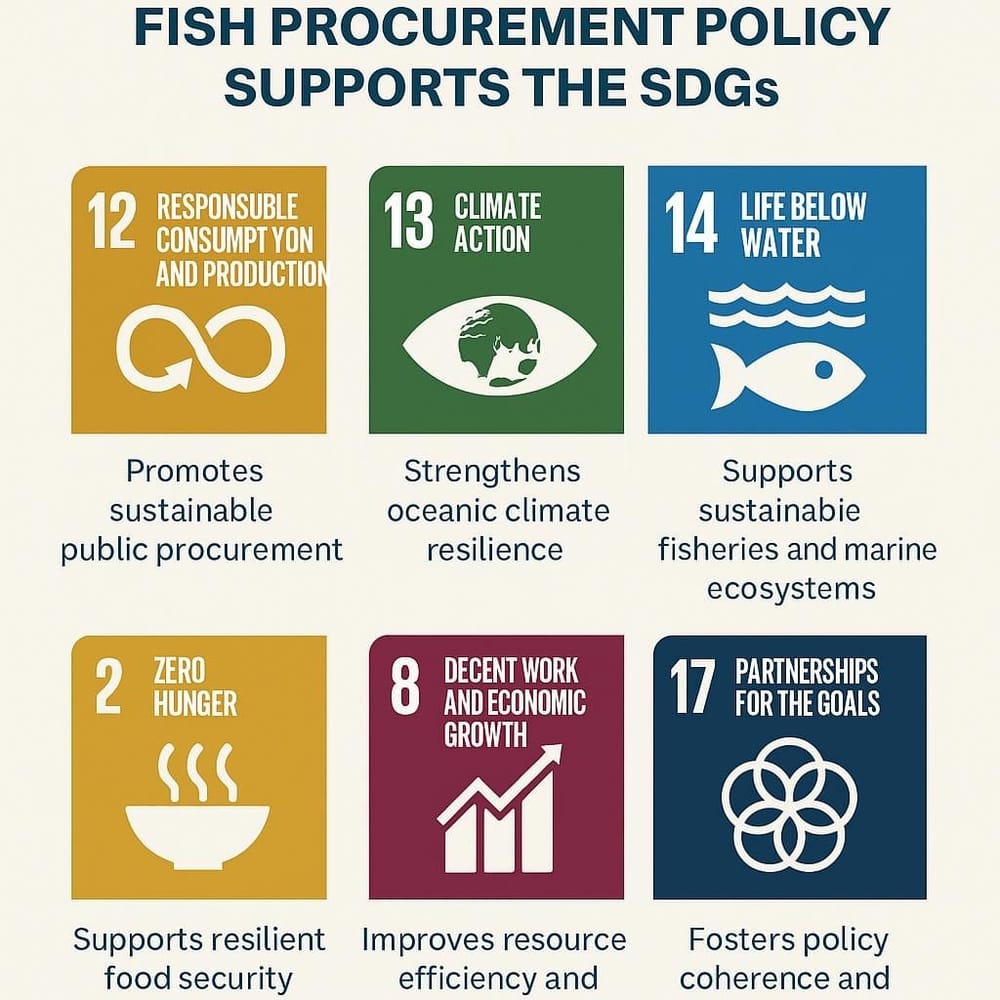
CASE STUDY: The UK's Sustainable Fish Policy in Action
As reported by the Marine Stewardship Council (MSC), the UK government has implemented buying standards requiring all government departments and agencies to source fish from demonstrably sustainable fisheries. These standards, which align with the FAO Code of Conduct for Responsible Fisheries, are set to come into force this autumn and include MSC certification as a key benchmark. This change will affect catering contracts across central government, including schools, hospitals, prisons, and military institutions, impacting over 400,000 meals per day and representing an annual spend of £16.1 million. This initiative exemplifies how public procurement can be a strategic instrument for achieving the SDGs. By embedding sustainability requirements into procurement standards, governments can transform markets, reward responsible producers, and drive progress toward environmental and social goals.
SDG 14 TARGETS SUPPORTED:
This procurement reform is a direct contribution to SDG 14, particularly the following targets:
SDG 14.4 – Sustainable Fishing
- “By 2020, effectively regulate harvesting and end overfishing, illegal, unreported and unregulated fishing and destructive fishing practices...”
The UK’s policy ensures all publicly procured fish comes from certified sustainable fisheries, helping eliminate overfishing and promoting traceable, science-based harvesting practices.
SDG 14.6 – Discourage Harmful Subsidies
- “By 2020, prohibit fisheries subsidies which contribute to overcapacity and overfishing...”
While not a subsidy ban, this redirection of £16.1 million annually toward responsible suppliers disincentivizes unsustainable practices by making sustainability a prerequisite for public contracts.
SDG 14.7 – Increase Benefits to Developing Countries
- “By 2030, increase the economic benefits to Small Island developing States and LDCs from sustainable use of marine resources...”
As more governments adopt such standards, global demand for certified sustainable products can open opportunities for developing countries and small fisheries already working toward or achieving certification.
SDG 14.b – Access for Small-Scale Fishers
- “Provide access for small-scale artisanal fishers to marine resources and markets.”
Certification pathways incentivized by this policy can lead to increased market access for small-scale artisanal fisheries, provided they are supported in achieving certification.
BEYOND THE OCEAN: CONTRIBUTION TO OTHER SDGs
This initiative doesn’t stop at SDG 14. Here's how it supports broader sustainability goals:
SDG 12 – Responsible Consumption and ProductionTarget 12.7 – Promote Sustainable Public Procurement
- Sets a national precedent for integrating sustainability into government contracts
- Aligns public buying with environmental and social criteria
- Educates suppliers and institutions on responsible sourcing expectations
SDG 13 – Climate Action
Target 13.2 – Integrate Climate Change Measures into Policies
- Sustainable fisheries support ocean carbon capture and ecosystem resilience
- Discourages destructive fishing methods with high emissions or ecosystem impact
- Reinforces climate-smart public policy alignment
SDG 2 – Zero Hunger
Target 2.4 – Ensure Sustainable Food Systems
- Maintains nutrient-rich, responsibly sourced fish in public meals
- Protects long-term food security by preventing stock collapse
- Promotes resilient aquatic food systems in institutional catering
SDG 8 – Decent Work and Economic Growth
Targets 8.4 and 8.9 – Resource Efficiency and Sustainable Local Economies
- Rewards fisheries that adhere to ethical labor, safety, and environmental practices
- Supports a “blue economy” approach where livelihoods and ecosystems are interconnected
- Enhances transparency, which helps eliminate exploitative labor in fishing supply chains
SDG 17 – Partnerships for the Goals
Targets 17.14 and 17.17 – Policy Coherence and Public-Private Collaboration
- Brings together government, NGOs, certifiers (e.g. MSC), and suppliers
- Models policy coherence between public health, procurement, and environmental strategy
- Encourages other governments and institutions to follow suit
VISUALREPRESENTATION
REFERENCES



